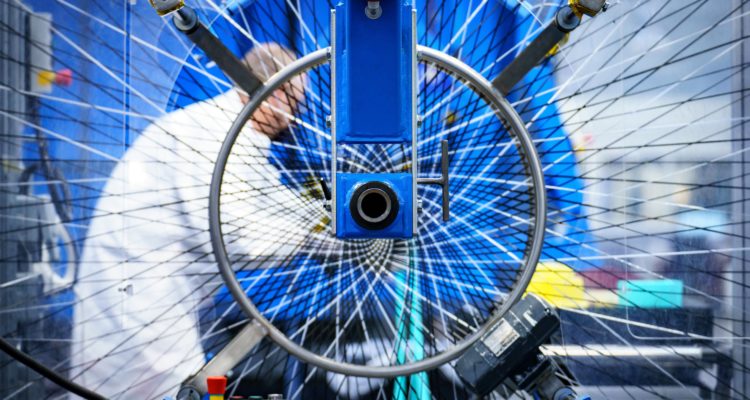When U.K.-based Dowty Propellers, a GE Aviation subsidiary, began exploring propulsion designs that could meet next-generation aircrafts’ needs, it soon became clear that manufacturing processes would have to advance as well. Through its four-year £20 million digital propulsion research and development program (DigiProp), funded in part by the U.K. government, the company pushed its propeller designs, materials and production processes in entirely new directions.
Several market indicators guided DigiProp’s design direction. Among these was the disruptive movement away from larger aircraft to smaller air taxis intended for short distance travel. Allied Market Research has projected that the global air taxi market will grow from $817.5 million in 2021 to $6.63 billion by 2030, with a compound annual growth rate of 26.2%. The smaller size of air taxis provides greater opportunity for a shift to more sustainable electric vehicles, another critical market driver. However, this shift puts new structural and dynamic load demands upon propellers.
With sustainability as another market driver, Jonathan Chestney, engineering leader for Dowty, says, “We recognize that we have to squeeze every fraction of a percentage point of efficiency out of our propellers because that directly drives fuel burn or, in all-electric aircraft, mission length and the ability to carry more weight.”
In the past, Dowty might have pulled design inspiration from a tried and tested family of aerodynamic shapes due to the complexity of propellers. “A blade is not just about the shape of the airfoil as it moves up the blade,” says James Trevarthen, a senior composites engineer at Dowty. “You’ve got twists you must take into account, as well as the extent to which the blade might sweep forward and backward.”
Even a slight change in shape or weight can have tremendous repercussions on structural requirements, among other factors. Managing these shifts and identifying which one can lead to desired performance improvements becomes exponentially simpler when working in a digital twin, a data-rich virtual representation of, in this case, an aircraft propulsion system. By converting to a digital twin process, Dowty can model performance of blade design and material options and simulate performance before the component is built.
Simulation of varying shapes and materials allowed DigiProp to determine how to best meet the many competing aerodynamic requirements, as well as structural and dynamic loads while keeping the entire process cost effective. However, with the ability to simulate the performance of so many design possibilities, it became evident that new manufacturing processes would give Dowty the freedom to make the best solutions a reality. This drove the use of a digital twin into the factory environment.
“We modeled everything, from machines and tools to people and shifts, to make sure that we had the right mix,” says Simon Peckham, manufacturing engineering and training leader for Dowty. Modeling manufacturing processes allowed researchers to analyze a wide range of data to identify bottlenecks in staffing, machinery placement and process type to identify more efficient alternatives. Among other options, DigiProp determined that expanding into thermoplastic materials offered the opportunity for improvement.
Dowty had previously manufactured blades with a blown thermoset foam core around which was added a dry fiber preform that consisted of hand layup carbon fabrics with biaxial fabric reinforcement. Through close collaboration with the National Composites Centre – one of three High Value Manufacturing Catapult centers that were critical collaborators on the program – DigiProp determined that thermoplastic part manufacturing could condense the cure process time to about five minutes. Compared to the four-hour process for a comparable thermoset epoxy resin component, this switch offered tremendous potential for high-volume cost savings.
“Triaxial thermoplastics are a good option when we are looking at very high-volume potential markets, in lower thrust areas of the propeller market,” says Trevarthen in reference to unmanned aerial vehicles (UAV).
Thermoplastics also allowed for removal of the foam core, improving fatigue life and reducing component weight. The recyclability of the material further hit the demand for more sustainable solutions.
DigiProp developed a new manufacturing process that uses a combination of bladder molding and triaxial braiding of CFRP composites. The bladder system uses a wax mold coated with a silicone product, which together creates a rigid mandrel for overbraiding the material. The mandrel is designed to be easily removed from the mold, leaving the inflatable silicone bladder behind. This allows for the application of pressure internally to the composite preform.


